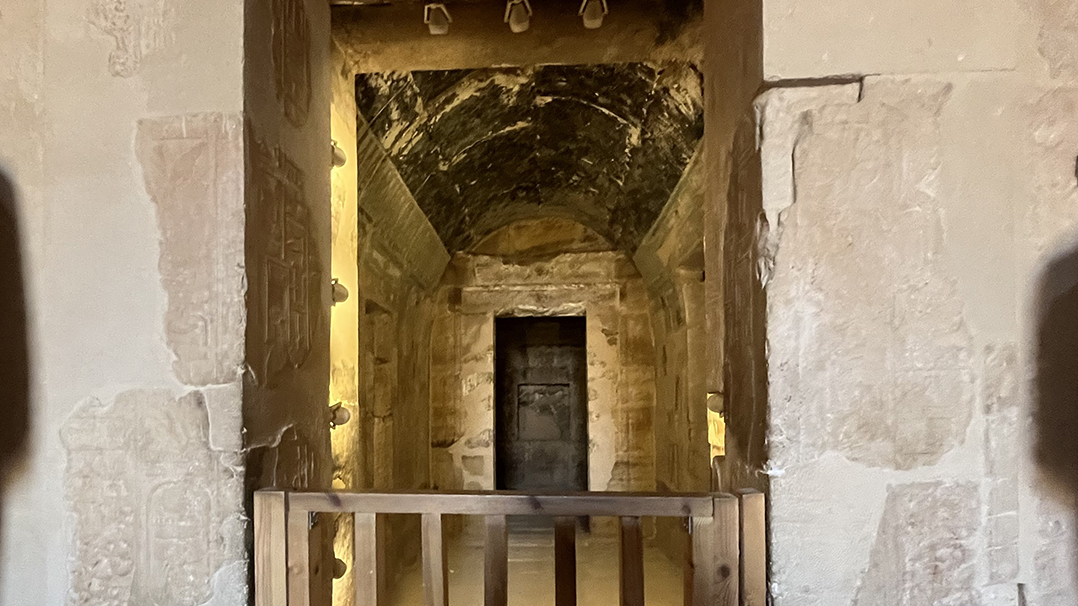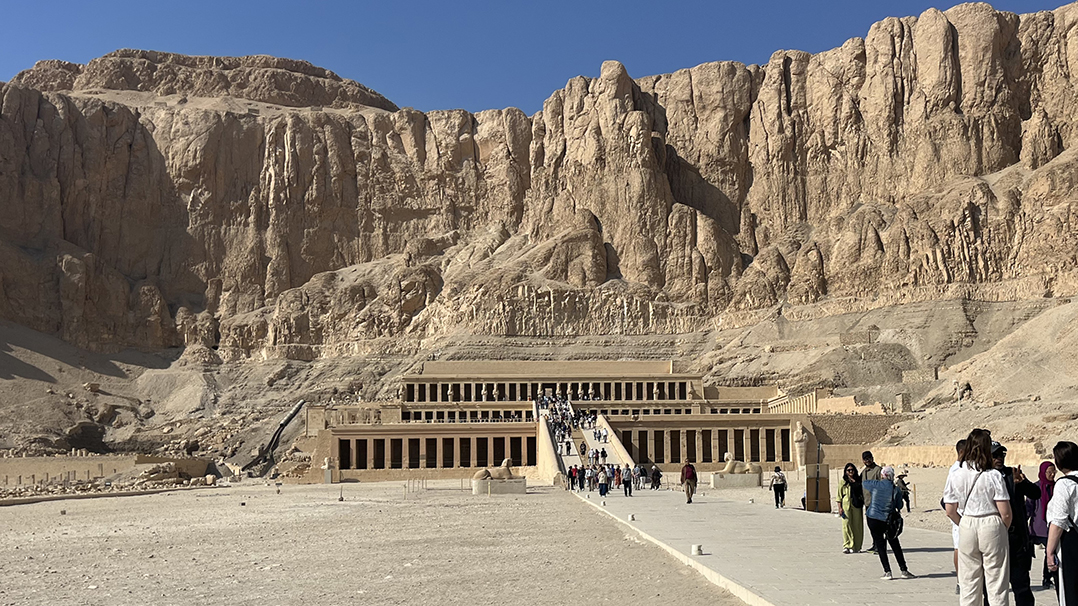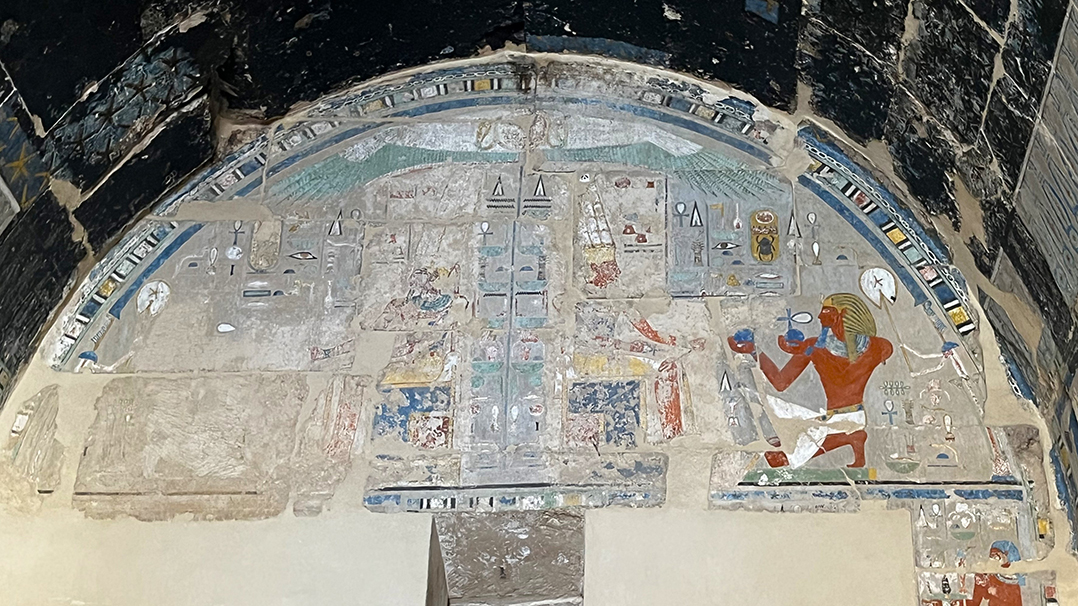In our ongoing tour of Egypt, we continue our stay in and around Luxor, visiting the mortuary temple of Hatshepsut, Egypt’s female pharaoh.
Hatshepsut was born in 1508 B.C., the daughter of Pharaoh Thutmose I. After a brief stint as regent for a young male pharaoh, Hatshepsut declared herself pharaoh in 1479 B.C. During her reign, she dressed as a man, sometimes wearing a false beard strapped around her head. One of the most successful rulers of her era, Hatshepsut expanded Egyptian trade and engaged in a massive building program that remained unmatched for centuries. Among the many buildings constructed during Hatshepsut’s reign was her mortuary temple, dedicated upon her death in 1458 B.C.
The temple, on the west bank of the Nile across from Luxor, is nestled against a limestone cliff and is considered one of the greatest architectural achievements of antiquity because of how well it blended with its surroundings. The 97-foot-tall temple, where Egyptians could worship the deceased Hatshepsut and her father as gods, includes three colonnaded terraces rising above the desert floor. The upper terrace features statues of Hatshepsut, shown with a false beard. The walls of the temple are adorned with scenes of Hatshepsut and Thutmose with the gods, one showing Hatshepsut’s divine birth. The temple complex also includes shrines to the Egyptian god Anubis and goddess Hathor.
Shortly after Hatshepsut’s death, her successors sought to remove any evidence of her existence, which included defacing her temple images, where her soul was thought to reside. Statues of her at the mortuary temple were damaged and some were destroyed. Twentieth-century archaeologists reconstructed Hatshepsut’s lost reign from images overlooked for destruction. After Christianity came to Egypt, Hatshepsut’s mortuary temple was used as a monastery, which gave rise to its current name, Deir el-Bahari, Arabic for “Monastery of the North.”








